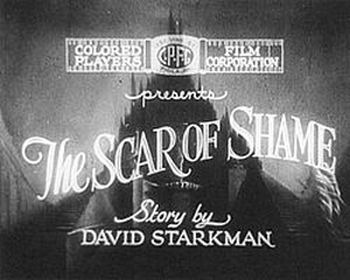
The Colored Players Film Corporation was a silent film production company based out of Philadelphia, Pennsylvania in the early twentieth century. Though short-lived, it was able to add some much needed respectability to black film at the time.
Sherman H. “Uncle Dud” Dudley was born in Texas in about 1872, and found some success in his early career in medicine and minstrel shows. When cinema arrived on the scene at the beginning of the 20th Century, he transitioned into vaudevillian and race movies. Though he became a bit of a celebrity, he was never satisfied with how the industry portrayed African Americans and therefore not particularly proud of his part in it. He had a vision to create a company that produced black films with more depth and more interesting characters for the audience (as well as for the actors portraying them).
Dudley found a way to make his dream a reality when he met David Starkman in 1926, an owner of a black theatre who agreed that black film should transcend what had previously been offered to the public. Starkman was able to finance the Colored Players Film Corporation, also becoming head of its operations while Dudley became its president. Though the crew that was assembled was almost entirely white and it may have appeared that the company was run by whites, it was actually an extremely well-balanced group with Starkman and Dudley in control.
Their first film “A Prince of His Race,” featured a conventional theme regarding motherly love and melodrama. Their second, “Ten Nights in a Barroom” was an updated version of an older story. It was not particularly successful, as the script was poor and Charles Gilpin’s (formerly of the Lafayette Players) stage style was difficult to watch.
It was in 1927 that the company produced its masterpiece: “Scar of Shame.” The film explored relations between social classes within the African American community when the character Alvin Hilliard engages in a relationship with Louise, a girl from a lower social background. While Alvin is struggling to become successful within the world of music (he is told he can only find success by imitating white music), he also finds difficulty introducing Louise to his mother, who he knows would disapprove. As a result of their different stations in society (or at least their perceptions of them), their relationship spirals out of control and ultimately ends in tragedy.
Although “Scar of Shame” was not an inspiring film, it did give black audiences an experience unlike one that they had had with many of the outright insulting pieces of entertainment that had been previously provided. By the late twenties, black film had become art, partially because of the Colored Players.
By the end of the 1920s the company lost to its competitors after struggling to stay current and relevant in an industry that continually required considerable capital and new technology.

